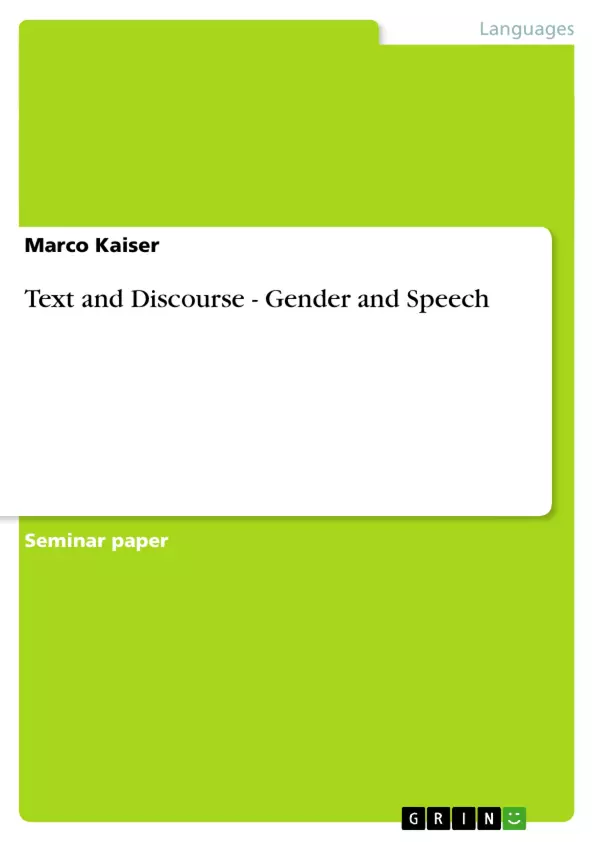George Orwell wrote in his essay “Politics and the English language” in the year 1946: “Let meaning choose the word and not the other way around”.
Every day people participate in conversations. There are conversations between men, between women and between men and women. If we consider that people we look at have a difference in gender, social class, age, race, nationality, profession and religion, it will be easy to see the differences. They are obviously visible. But I will restrict this work. I look at people of the same language, which means people within the same cultural background, more like a homogenous society or let’s call it even tighter a community. In this case I could assume that there are no communicational problems. Even if there are some differences in education, a person who talks to another person can expect that he or she will be understood. Because of the cultural knowledge a person brings into a conversation. Therefore it will not be a problem to understand each other. To summarize such a situation I will phrase this as a society with the same language.
Inhaltsverzeichnis (Table of Contents)
- Introduction
- Field of Work and General Perspective
- Historical Background
- Women and Their Words
- The different use of Grammar and Intonation
- Social Background
- Man made Differences
- Perspectives
- Bibliography
Zielsetzung und Themenschwerpunkte (Objectives and Key Themes)
This paper examines the differences in speech between men and women, exploring the historical background, linguistic distinctions, and social factors influencing this phenomenon. It focuses on the influence of gender on language use, considering how men and women might utilize different lexical knowledge, grammatical structures, and conversational styles.
- Historical background and evolution of research on gendered speech
- Lexical differences in vocabulary used by men and women
- Habitual speech patterns and social influences on language use
- Grammatical differences in speech between men and women
- Social factors contributing to gendered language differences
Zusammenfassung der Kapitel (Chapter Summaries)
- Introduction: This chapter introduces the topic of gender and speech, highlighting the potential for differences in communication between men and women. It emphasizes the importance of cultural context and language as a shared element within a community, suggesting the possibility of communication challenges despite shared language.
- Field of Work and General Perspective: This chapter explores the challenges in understanding each other in everyday conversations, particularly those arising from differences in perspective and language use between men and women. It raises questions about whether men and women have distinct lexical knowledge and suggests the possibility of linguistic differences contributing to communication difficulties.
- Historical Background: This chapter provides a brief overview of the historical development of research on gender and speech, tracing its roots back to the 17th and 18th centuries. It emphasizes the increased focus on this topic during the late 1960s and early 1970s due to the rise of the feminist movement and social movements against discrimination.
- Women and Their Words: This chapter examines the work of Otto Jespersen, a prominent figure in gender and language research. Jespersen's work highlights differences in language use between men and women in various cultures, including examples of distinct dialects and vocabulary restrictions based on gender. The chapter explores Jespersen's observations on women's vocabulary size and the potential influence of educational differences.
Schlüsselwörter (Keywords)
This paper focuses on gender differences in language, exploring the use of lexical knowledge, grammar, and conversational styles. It examines the historical development of this research area, drawing on the work of influential figures such as Otto Jespersen, and analyzes social factors contributing to observed differences in speech patterns between men and women.
- Quote paper
- Marco Kaiser (Author), 2004, Text and Discourse - Gender and Speech, Munich, GRIN Verlag, https://www.grin.com/document/78896



